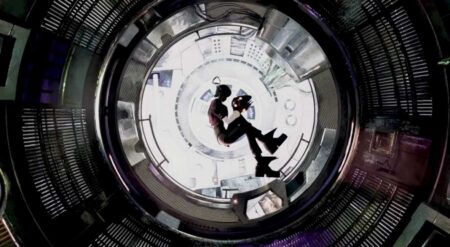The patch is about to strike 12.0 for Blizzard’s long-running MMO, World of Warcraft. The denizens of Azeroth are preparing for the void invasion of Quel’thalas and the Sunwell in Midnight, the second chapter of WoW’s Worldsoul Saga. As part of the next expansion’s alpha launch, we got to check out Alpha and the redesigned Quel’thalas early. And with it, we were invited to chat with Maria Hamilton, Design Director, and Paul Kubit, Associate Game Director, to discuss Midnight, lessons learned from The War Within, and what exactly is happening with “that sword”.
In fact, the conversation kicked off with us chatting about “that sword”. The sword being a massive sword that was stabbed into Azeroth by the mad titan, Sargeras, at the end of Legion. The sword has been sitting in the middle of Silithus since, with minimal sign of relevance other than feeling like a MacGuffin to start the events of Battle for Azeroth. At BlizzCon 2023, the focus of the Worldsoul Saga and The War Within reveal was that Sargeras’s sword would be addressed. But it never was during the tenth expansion.
Maria Hamilton said that the sword will still be in play. Just not yet. “It hasn’t been forgotten. It’s waiting for just the right person, and that person has not shown up yet.” This is very interesting, as previously, the sword itself was essentially neutralized after we sacrificed our artifact weapons in Legion to it. With Legion Remix coming very soon, maybe this is all a hint that we will see it being wielded again in Midnight or The Last Titan in some fashion?
Sargeras’s Sword is waiting for the right person
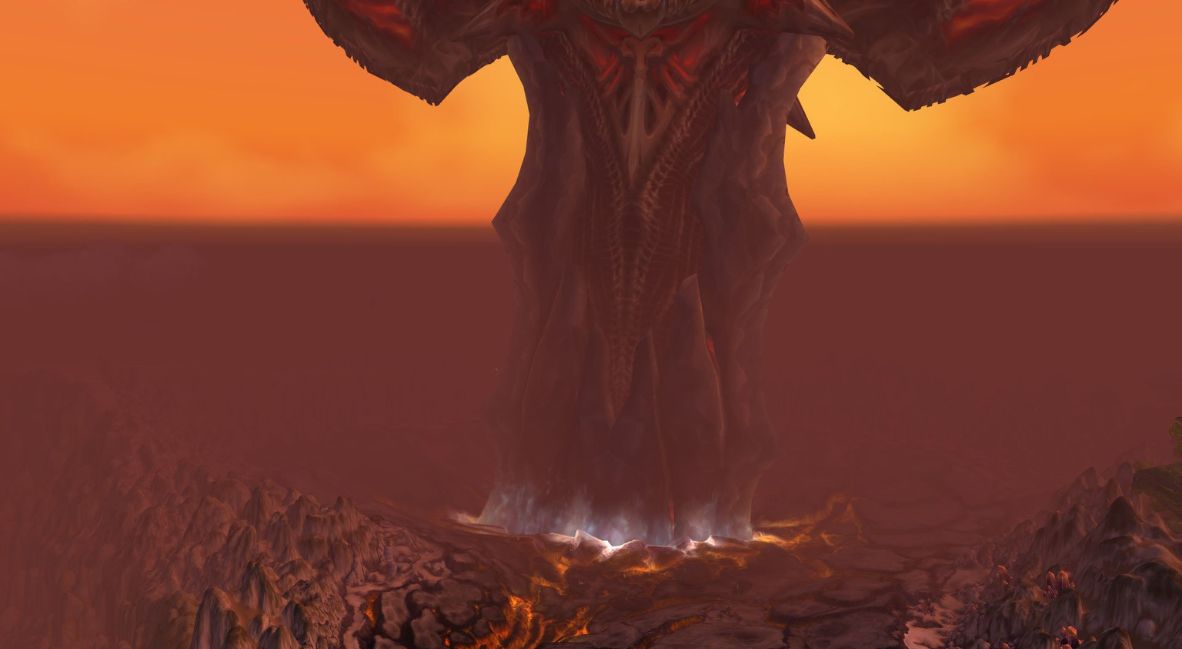
Stepping back to a more general look at Midnight, we next talked about its development cycle. The timeframe between Dragonflight to The War Within and now to Midnight is much shorter than what we’ve seen in the past regarding expansion release timelines. Particularly with the release of the eleventh expansion, this feels like the goal that Blizzard previously stated, with an approximately one-and-a-half-year timeline for expansion lifecycles, has been achieved. Paul Kubit told us that this was from an improvement in efficiency and iterations.
Kubit stated, “What you’re seeing is just the result of iteration on having done this for a long time. We’ve built up a team of designers, developers, and producers. Because they’re doing a lot of the planning and scheduling and understanding what our bottlenecks are and constraints, to be able to do things more efficiently.”
He added, “So there, as we look back in past expansions, beloved expansions, expansions where we made really cool stuff, we can look back at the way we made it and say, ‘This was great, but it was inefficient.’ We you know, we spent a lot of time working in spaces where it didn’t end up getting a lot of juice for the squeeze, as it were. And so it’s iteration.”
Hamilton reiterated the point of improving efficiency as well as improving communications. “An awful lot of game development and being successful at hitting targets and hitting milestones has to do with really good communication and making sure that the right people know the things. I would also credit the fact that this is a trilogy. We could sit down and do some planning early on and understand how we wanted to flow this through the whole trilogy, which has helped us better organize around those goals and around revealing parts of the story as we go.”
World of Warcraft is hand-made, no AI is used in its development
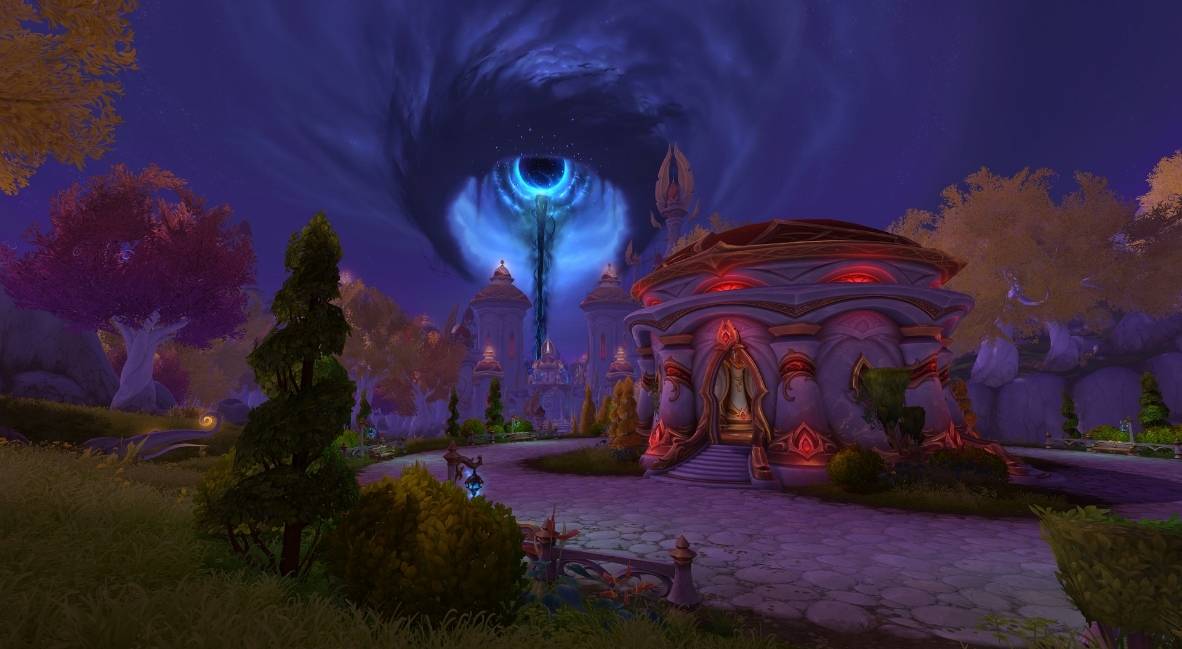
On the topic of efficiency, we talked about AI if it has (or has already found its way into) a place in World of Warcraft. Blizzard’s new parent company, Microsoft, has intensely pushed its employees to use its internal AI tools, even considering AI use as “no longer optional“. So with the weight of AI looming over Blizzard and the WoW team, how are they handling it? Are they even using AI? According to Hamilton, the AI push hasn’t reached them, and it’s not being used for WoW’s development.
Hamilton said, “We don’t use AI in building World of Warcraft. We have used machine learning, and we’ve talked about that before, where we use tool to take some of the very tedious work away. Helmets are a big thing. You’d be amazed at how many different ways your head can clip through a helmet, and that’s really tedious.”
She added, “There’s still always a person who is going to be looking over the result and approving it or saying, ‘No, that’s not good enough yet.’ But we have not really gone into those waters, and I personally have a hard time believing that AI can produce the same kinds of stories that resonate with people as people can.”
Hamilton added a prime example of where she thinks AI will have the most difficulty finding its place in WoW, the game’s ability to tell impactful personal experiences. “The stories that really resonate, that people respond to whenever we have an expansion out, are the very personal, human feelings, kinds of things. And for me, I think that comes from lived experience. I have my doubts about what’s possible now. I mean, the future is what the future is. But for now, we make everything by hand.”
The stories that resonate are very personal, human feelings-based stories
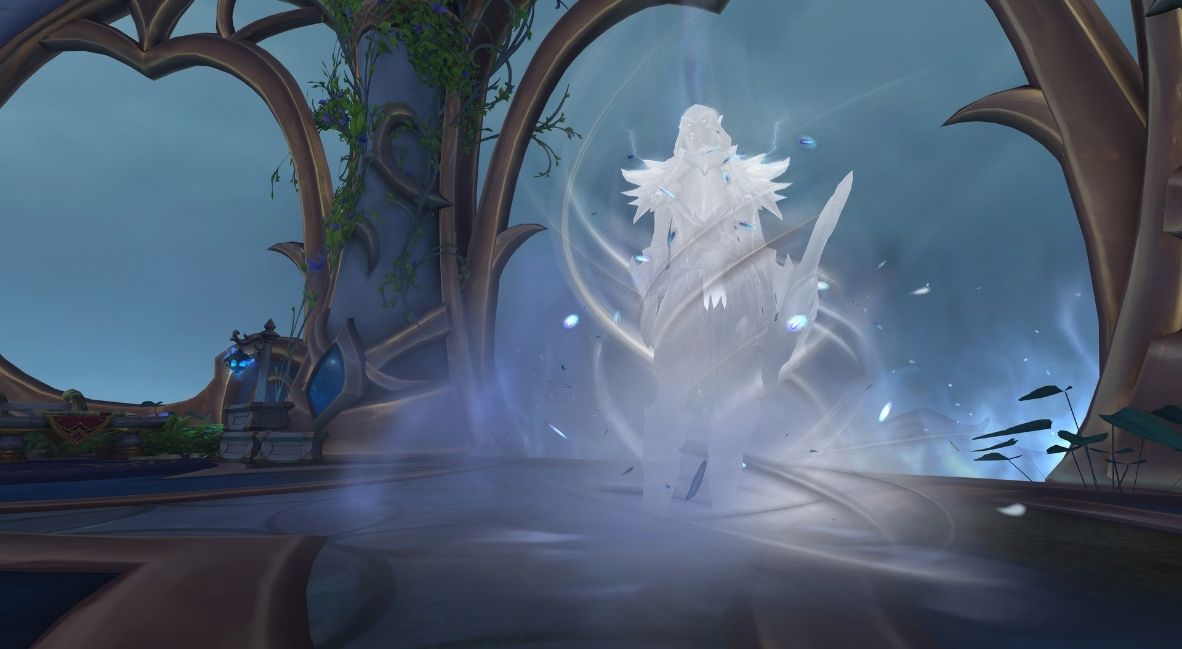
Moving on, we discussed hero talents. Hero talents are a new talent system introduced in The War Within. On top of class and specialization choices, each spec has two options for what flavor they want to add to the package. Like with my main, Preservation Evoker, we had the option between a more time-magic-based Chronowarden, or use more flame spells to heal with Flameshaper.
Discussions with guildies had me coming away with feelings that hero talents were much more hit or miss with other classes, Ret Paladins in particular. So, what lessons have been learned after an expansion with hero talents? Per Paul Kubit, there were a couple. “We’re often looking at making sure that we’re controlling burst that often hero talents will focus on a particular ability. So we need to make sure that there aren’t too many layered efficiencies in a particular ability or particular set of abilities in a spec or classes’ skill set. That can cause problems.”
He clarified, “It’s awesome when you do have a burst, when you are bursting, but that can cause those 45 seconds when you’re not bursting, it feels like you’re unable to do great things. And so we also want to make sure that we’re seeing interesting choices and that players feel compelled to choose one talent tree over another for reasons that are ideally based on play style.”
“We have a really good internal information team where we’re able to track stats on usage rates. This is also coupled with community, where you can see feedback from folks and understand which hero trees feel good, which ones don’t feel good. So we’re able to iterate them, not all that different from how we balance out any other talent tree,”
The ideal situation of Hero Talents and Choice Nodes is to get close to 50/50
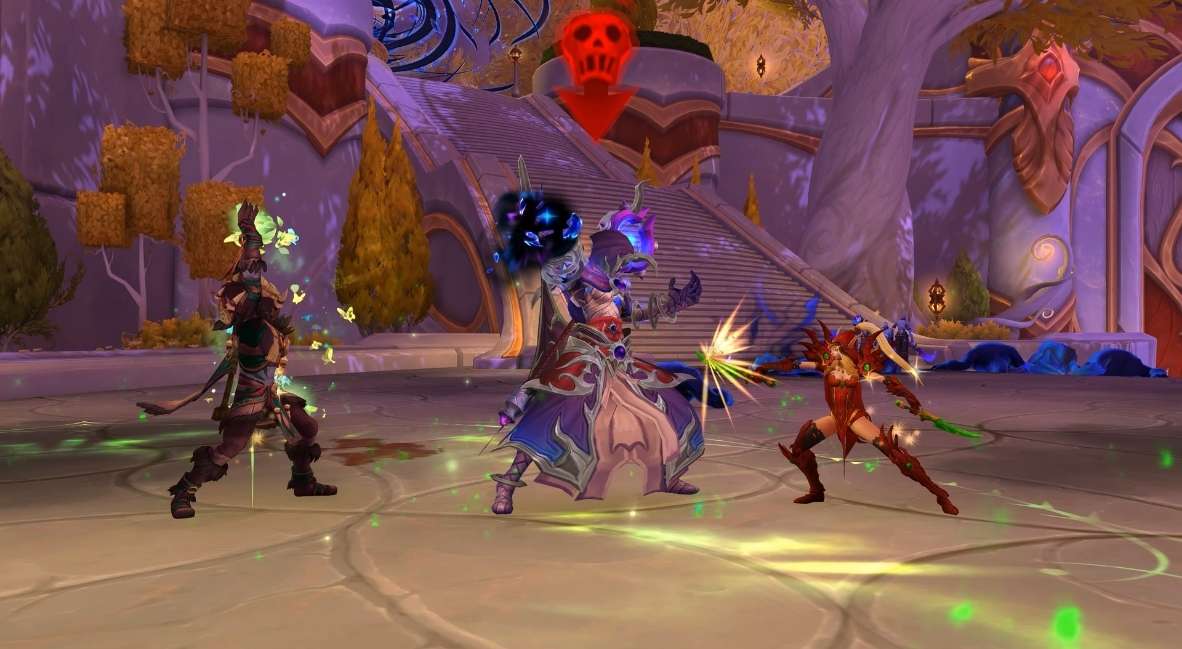
But what about those trees where classes feel like there isn’t a choice? One hero tree doesn’t feel nearly as impactful as the other? Kubit added that this is all a part of ongoing work.
“This is not necessarily just true for hero talents, but even any choice node, we can see if a particular choice node is 95% to 5% [which] usually means there’s something wrong with that 5%. Or maybe it means that there’s something too good about that 95% choice. But we’ll dig into those, because the ideal situation is trying to get most of those close to 50/50,” he said.
Similarly with talents, Blizzard has always tried to find a balance when it comes to rewards for content. Players will regularly find the path of least resistance that leads to the best rewards. With the introduction of new world content, including Midnight‘s Prey system, all that is being made to not overshadow other forms of content. Like how Delves were seen as the best way to gear early on in The War Within, making the entry to Mythic + and raiding feel more off than ever at the start of season one.
Kubit confirmed it is a balancing act, one they actively work on. “When it comes to rewards efficiency, there are a couple of ways that we attack this. First is paper design. We look at this and plan it out. The systems designers are are pretty pro at this right now. So Excel spreadsheets can go pretty far in being able to understand hours versus item-level terms, and understand how you can balance that way. But that can’t get you everything. We also do play testing.”
He added that they have a phase of testing called the soup tasting. “This is tasting the entirety of the soup of the game. So a lot of the team members, like myself and Maria, will go in and play a lot, write a lot of feedback, write a lot of notes, but specifically testing long-term stretches. We can test a quest line in an afternoon, we can test an encounter in an afternoon, but you can’t test the experience of playing the game in an afternoon, and that’s something which takes weeks to be able to understand.”
Blizzard ‘tests the soup’ to find the right balance of the player experience
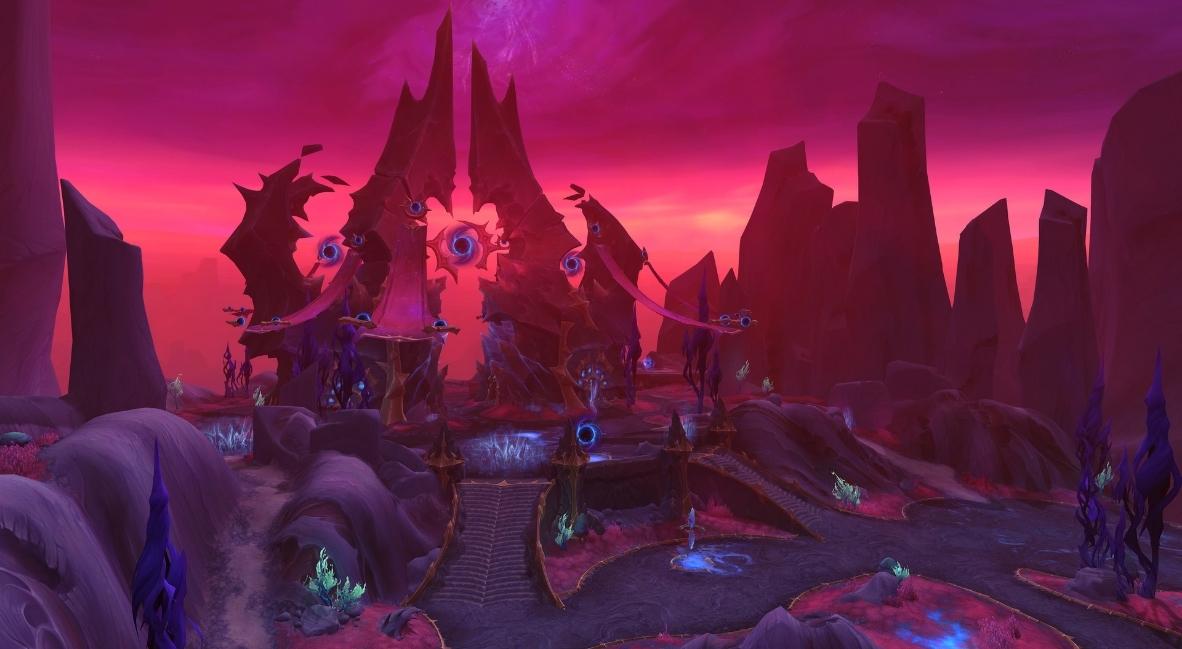
Next, we talked about the frequency of new class/race combinations. Throughout the years, older races getting new classes has felt like it’s slowed down to a crawl. Almost being replaced by new Allied Races being added to the fold instead. Even with the announcement of Midnight, we are only getting one new class/race combo with Void Elves, an Alliance Allied Race, gaining access to the Demon Hunter class. But there appears to be no new Paladins in what feels like a Paladin and Light vs Void expansion.
Kubit stated that the addition of new combinations tends to come from the story. “There is a new race class combination that is part of Midnight, the Void Elf Demon Hunters. This is largely due in part to actions related to the void that are happening, and the void elves coming into the spotlight. That’s not to say that’s always the case. Sometimes it’ll be just catching up and looking back and seeing what we’ve done in the past.”
When asked directly about the surprise of no new races being able to become Paladins, and how just about every race has their own attachment to the light at this point, Kubit added, “Well, this is something we can we can bring back to the team and talk a little bit about as we continue to think about other cool race class combinations in the future.”
We then chatted about some features introduced in The War Within that have felt like they have flown under the radar lately: Warband Reputations and Lorewalking. Warband Reputations were introduced as a way to tie reputations earned to the account instead of each player character. This was also supposed to be extended to past expansions. The last one to receive this treatment was Shadowlands as part of 11.1.5.
The War Within Recap builds on the Lorewalking systems
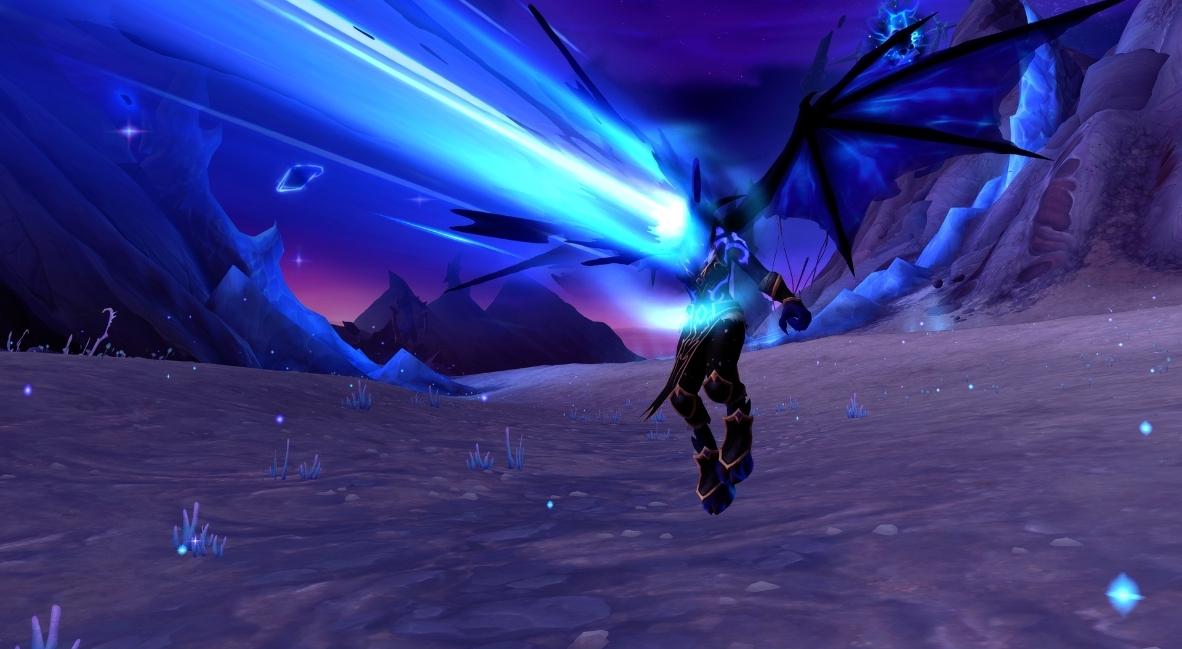
Kubit confirmed that more warband reputations are still coming. “This is something that is still on our radar, still something that we want to make sure that we don’t have the seams between. Reputations and old reputations, where many are of the newer ones are warbound, and others are based on individual characters.”
Hamilton said that more Lorewalking is definitely on the way. “We do have more lorewalking stories coming, and we typically try to choose topics that will help inform players about something that is going to be important in the story, or something that’s going to be key to understanding. So look for those in our content releases, even leading up to Midnight.”
She explained further that the lorewalking tech is being used in other ways. “The lorewalking tech itself has been used both to improve our new player and returning player experience, as well as to create a catch-up story of The War Within. That catch-up story is its own thing. We’re calling it the Recap, and it’s intended to let players who never played The War Within or only played part of it get the gist of the entire story.”
Hamilton added, “I love the ability to curate a story and use quests we’ve already created, to put together a more complete look at something, a subject, or a culture, something like that. I think one of the things I’ll be interested in is there’s a lot of cinematics in this. You’re going to get to see a lot of the cool cinematics, and you’re going to see them more closely together than you did previously. So it feels a little different, a little different way for us to tell a story.”
In-game cinematics played more closely together tell the story a little differently
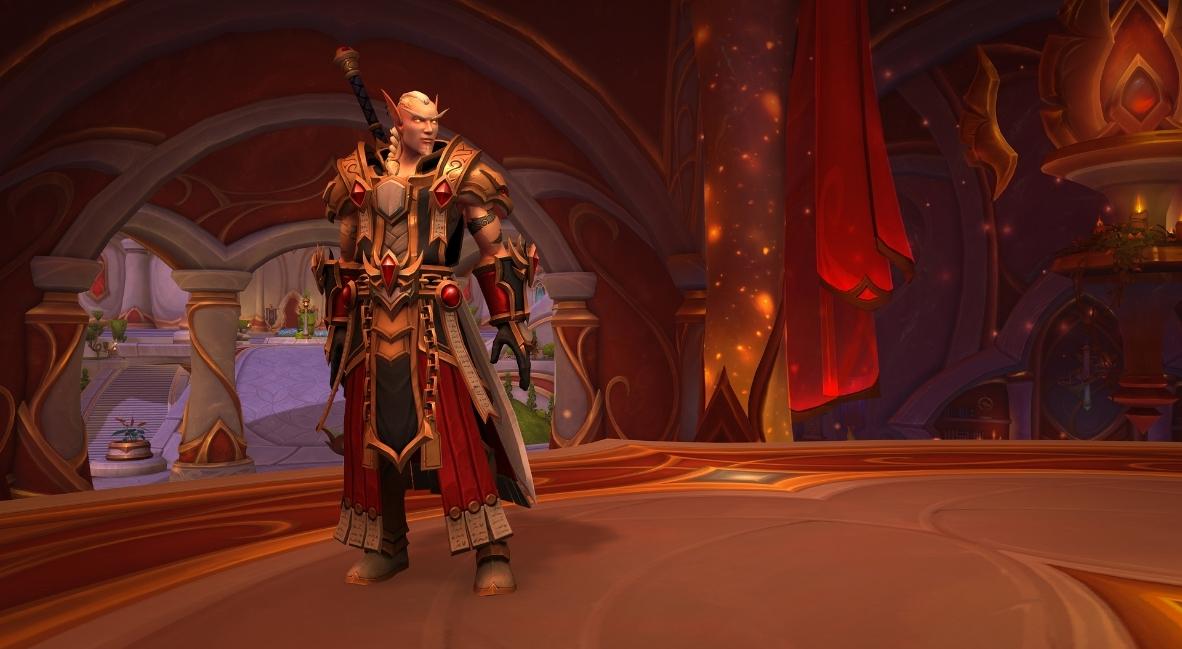
When asked if the Recap feature will eventually be used for previous expansions, before Dragonflight (which is also getting reworked to be a complete experience for new players, including story mode raids) and The War Within, Hamilton said, “I would love to do that. However, that’s one of those tasks that can be fairly time-consuming. And some of the very old ones, finding the story in them might be very hard. Some of them weren’t very story-centered. They had a fairly generic kind of feel to them, with interesting things happening in places, and so that would require a fair bit of surgery. But I wouldn’t say it’s out of the question.”
Finally, we talked about what they both were excited for most about Midnight, specifically features that they were excited about that may not be getting all the focus of the current hype cycle. Kubit kicked things off by saying he’s excited about something coming in a later update, prior to Midnight, the updated new player experience. “I think we’re going to see a lot of people who jump into World of Warcraft in the future. We always see new people coming in over the years, but in particular, because housing is really cool. And the changes to the new player system allow just a lot better integration of story as you’re going from Exile’s Reach into Dragonflight.”
He added, talking specifically about the updates to Dragonflight, “The changes to Dragonflight are huge. It’s going to be much more new player-friendly in terms of helping you understand how to play the game, understand the features that were previously taught as you were leveling.
These are now part of going through Waking Shores and the rest of those zones. We’re also building in versions of Story Mode raids for all the raids of that expansion. So you’re going to play the entire story from beginning to end, and then go straight into [The War Within] Recap. This will give a whole new generation of WoW players a much more ergonomic way of hopping into this game and then joining us, making cool, goofy things inside of our neighborhoods together.”
Legends of the Haranir let us experience the Haranir’s history
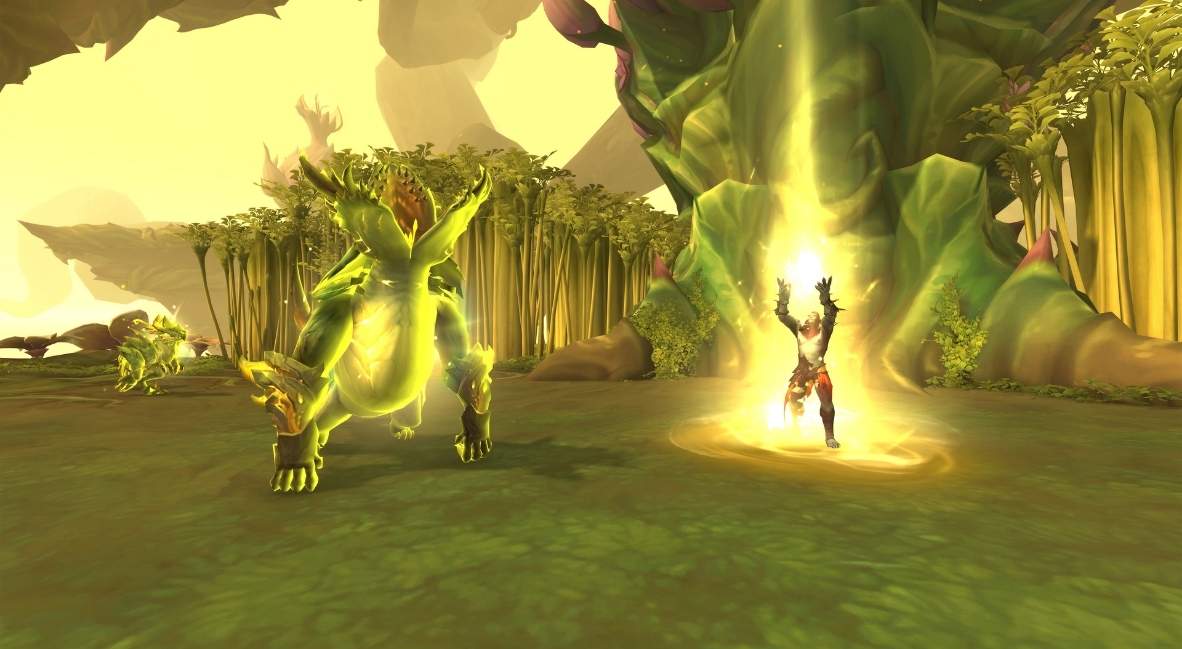
When asked where the new Exile’s Reach story takes place, Kubit confirmed that it no longer occurs before BFA, but is an introduction to Dragonflight. “These are the moments immediately preceding our arrival on Dragon Isles. The call has gone out to the dragons. We are sailing out to the dragon isles.”
As for Hamilton, she is excited about a late-game feature in Midnight, Legends of the Haranir. “I really like the lore stuff pretty obviously. One of the cool things about Legends of the Haranir is that you can unlock and learn about the Haranir’s history, their culture, and what they’ve experienced in the past through these memories. They remember these memories and draw these crazy, colorful stones with symbols all over them. Then, you can interact with those and experience those visions, learning about the past.”
At first, this sounds like The War Within‘s Worldsoul Memory feature. She confirmed that they aren’t like that. “They are much more story-driven, and they are like a specific event or a specific legend from their past, each event.”
World of Warcraft Midnight is set up to not only be a major story event, but an expansion that will reshape the game in many impactful ways. At first glance, and after playing several hours of the alpha, too, it’s already staged to be a top-three expansion. I am very much looking forward to seeing if they can stick the landing once again.
World of Warcraft: Midnight is scheduled for release in 2026 on PC and Mac.

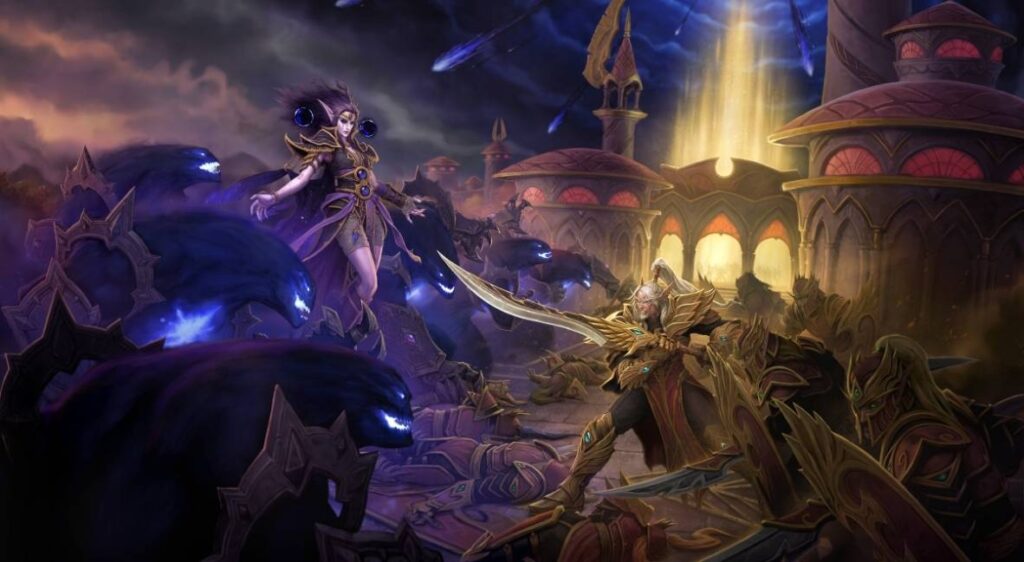

![[EXCLUSIVE] Palia Devs Dive Into Winterlights, New Tints, Lunar Paths, And More From Upcoming Patch Palia Winterlights Patch](https://butwhytho.net/wp-content/uploads/2025/12/Palia-Winterlights-But-Why-Tho-450x247.jpg)

